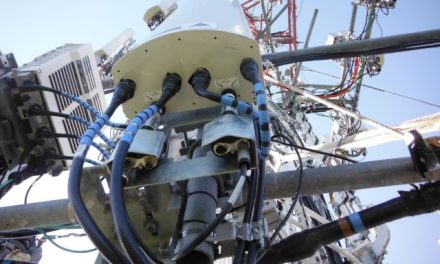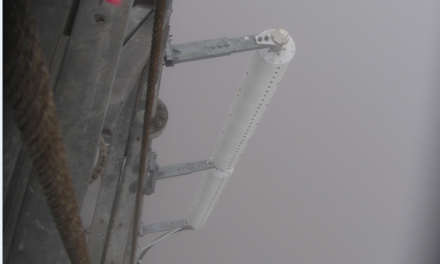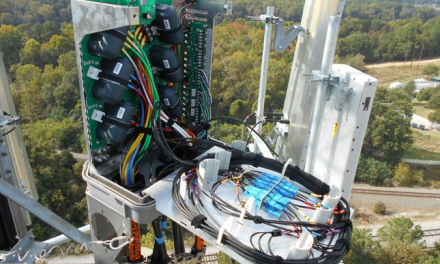I was looking at some client photos. While I’m supposed to be looking for clues about who is on the tower, I often notice other details – such as installation mistakes.

Overtightened “J” bolt – Notice how the plate on the right is bent and the one on the left is straight. Climbing ladders and cable ladders are held to the tower with these goofy, tiny 3/8” “J” bolts.
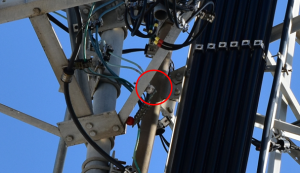
Old insulator on the grounding buss bar – The insulator in the red circle above is so faded from UV that it is almost white. It should be a bright red color like the insulator on the left-hand side, not in the circle. The white insulator is so deteriorated from UV fading that it can no longer insulate an electrical current from the tower, rendering the buss bar and any grounding lead attached to it useless. Both insulators should be the same color, whether white or red. The fact that they are different colors means someone recently was involved and did half a job. As a bad tower climber will say, “I can’t see it from my house,” meaning that it doesn’t matter if you do a job poorly because, face it, no one climbs up and checks.
Mi ssing ice bridge posts caps – There are supposed to be curved post caps that fit over the top of the ice bridge posts to keep rain and moisture from collecting inside the hollow pipe posts. So which is it? Did the installation crew not have the pipe caps to install or did they have the pipe caps and simply didn’t install them.
ssing ice bridge posts caps – There are supposed to be curved post caps that fit over the top of the ice bridge posts to keep rain and moisture from collecting inside the hollow pipe posts. So which is it? Did the installation crew not have the pipe caps to install or did they have the pipe caps and simply didn’t install them.
Lack of non-shrinking grout – There should be non-shrinking grout in the space between the metal leg pad of the tower and the concrete pier foundation the tower sits on. The tower and foundation are reduced in capacity when you have the situation here with no grout in the space and tons of daylight between the tower leg and the foundation.
Essentially, because there is no substance, like grout, in the space to transfer the forces from the tower to the foundation, the tower leg is supported by the threaded anchor rods only and not the entire designed foundation pier. Recently, I contacted an engineer and he told me some towers are designed to have the non-shrinking grout under the leg pads and some are designed not to need the grout. How can we tell, in the field, which type of tower design this is?
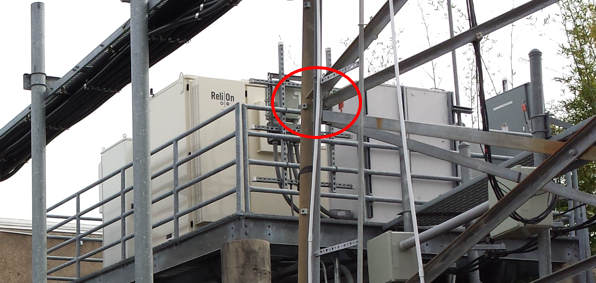
Backward bolt – The bolt in the left-hand gusset of the horizontal is installed backward. The nut should be facing out toward us. All bolts are installed up and out, so, visually, it is easier to see if they are tight. If a bolt vibrates loose, it will fall to the ground (close-up of the nut in the picture below).




